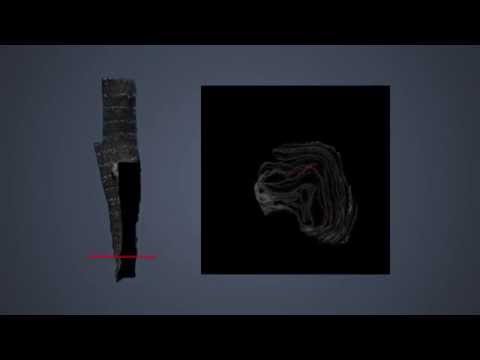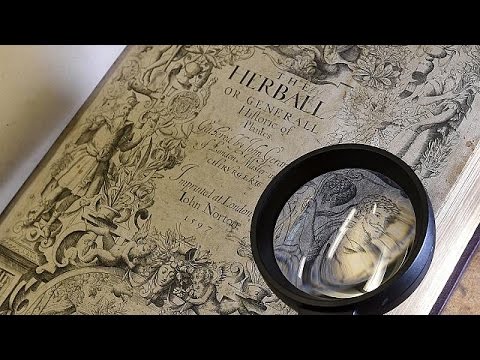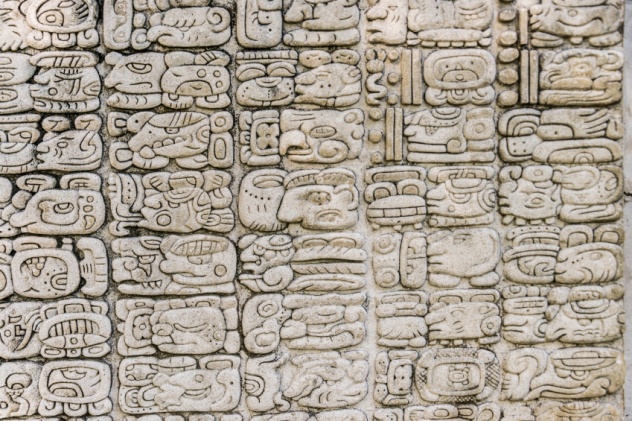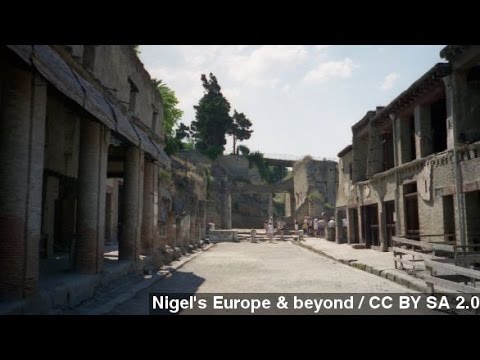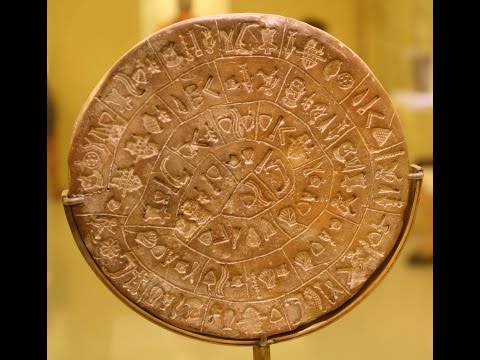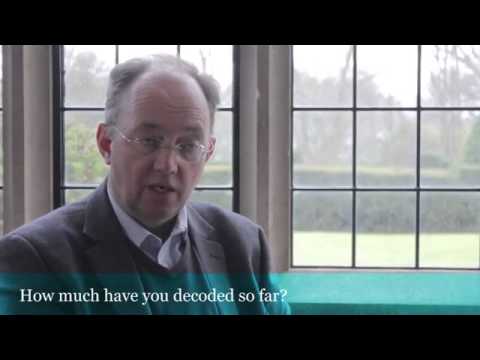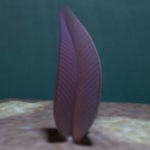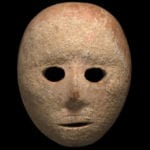There are many such ancient writings, pictographs, and ciphers that still defy understanding. Whenever one is cracked, it almost always yields exciting new information. Here are 10 decoded books, paintings, scrolls, and artifacts that allow us an unprecedented glimpse into the secret societies, lost libraries, beliefs, and rituals of Antiquity.
10 Egyptian Book Of Spells
In 2014, after decades to trying, researchers finally deciphered an Egyptian codex, and they were amazed to discover that it was a spell caster’s handbook. The beautifully illustrated pages contain spells for Egyptians who wanted love, success in business, a cure from black jaundice, or to perform an exorcism. Depending on one’s mood, there are options to use a spell to either make peace with an enemy or to crush him. The 1,300-year-old parchment references Jesus as well as an unknown godlike figure called “Bakthiotha.” Some invocations are even linked to an extinct religious movement, the Sethians, who in this codex, refer to Seth (third son of Adam and Eve) as “the living Christ.” It might sound like the Egyptians were religiously confused during this period, but researchers believe that the document marks the transition of a society moving from other belief systems to Orthodox Christianity. Whoever owned and used the book remains a mystery. Nobody knows where it originally comes from, either. The “Handbook of Ritual Power” (as the researchers are calling it) did leave a clue, though. The Coptic writing style points to Upper Egypt, perhaps even the ancient city of Hermopolis.
9 The Ein Gedi Scroll
Ein Gedi is a desert oasis located on the western shore of the Dead Sea. Its rich history includes nearly 5,000 years of off-and-on human occupation. Perhaps best known as the hideout of David when he fled from King Saul, Ein Gedi was also the site of a Byzantine Jewish village. At some point, the entire village burned down, including its mosaic-floored synagogue. In 1970, archaeologists unearthed a badly scorched scroll at the site where Ein Gedi’s synagogue used to be. Fire damage made it impossible to open, let alone read. Almost 50 years later, modern technology did the unimaginable; it allowed the 1,500-year-old scroll to be read without unrolling it. Scientists scanned the parchment with specialized software that opened the scroll virtually. They were stunned when the process revealed legible writing, which nobody had truly expected. What they found were the opening verses of the Book of Leviticus. Now recognized as the oldest biblical text since the Dead Sea Scrolls, the Ein Gedi scroll is also the first Torah scroll to be unearthed in a synagogue during archaeological excavations.
8 The Real Shakespeare
A 400-year-old book about botany could be holding an extraordinary treasure—a portrait of William Shakespeare. It’s the only portrait known to have been created during the playwright’s lifetime. Since it was done during his living days, researchers believe that it shows what he really looked like—handsome, aged 33, and soon to pen Hamlet. The now rare book, The Herball, came to the attention of historian Mark Griffith (also a botanist) when he was busy studying author John Gerard’s life. Griffith became convinced that four faces depicted on the title page weren’t merely decorative but rather were long-lost portraits of actual people. Griffith deciphered surrounding imagery connected to heraldry and emblematic flowers before their real identities emerged, namely the author of the book, another prominent botanist, and Queen Elizabeth’s lord treasurer. Finding Shakespeare among them knocked Griffith’s socks off. What apparently identifies Shakespeare is the fact that he’s holding a fritillary and an ear of sweetcorn, both references to his works. Griffith also recognized an Elizabethan cipher beneath the Bard, which gave credibility to the discovery.
7 The T514 Glyph
The majority of Mayan glyphs have already been decoded, but a few still keep their secrets. One of these proved to be incredibly insightful once researchers determined its meaning. Called the T514 glyph, it sat in an undiscovered royal tomb in southern Mexico for over 1,700 years. The toothy picture (a representation of a jaguar’s molar) resisted deciphering for over 60 years before being found to mean “sharp edge.” Researchers figured this out by studying actual skulls of jaguars and other glyphs. The discovery also finally revealed the name of the chamber where King Pakal was buried—“The House of the Nine Sharp Spears.” T514 has a war focus, appearing in many inscriptions about war. The king’s tomb itself was decorated to honor battle. The glyph is related to warriors invading cities and taking prisoners. The finding helped researchers to determine the frequency at which wars were waged between AD 700 and 800. There actually weren’t many wars during this period, despite the Maya favoring a warrior philosophy.
6 The Eye Society
A secret brotherhood obsessed with eye treatment was uncovered when researchers found what could be their only surviving relic—the Copiale Cipher, an 18th-century book that is both beautiful and strange. Bound in gold and green brocade paper, the 105-page manuscript is entirely handwritten. The book is mostly composed of abstract, never-before-seen symbols, though there are also Greek and Roman letters. The only other readable text is “Phillipp 1866,” and “Copiales 3,” which gave the manuscript its name. An international team of cryptographers tried to decode it but were hampered by the Greek and Roman letters and not knowing the authors’ native language. They had tried 80 languages before the letters were determined to be a ruse to deceive any would-be code crackers; they meant nothing. After discarding the useless letters, they tried German, since the book was found in Berlin and the name “Phillipp” is written in its German spelling. That cracked the code. The Copiale Cipher revealed a German secret society called the “Oculist Order.” The manuscript contains records of their politics and rituals (including an eyebrow-plucking initiation ceremony) as well as discussions on Freemasonry. Researchers believe that the group members weren’t necessarily eye doctors, despite their obsession. The eye is a symbol of power in many secret societies, which could’ve been the case with the Oculist Order.
5 ‘Winged Monster’
A cave painting in Utah is claimed by some to document an ancient pterodactyl sighting. Discovered in 1928, the bright, red pictographs were created by Native American hands around 2,000 years ago. Sometime after its discovery, a man chalked the image and declared that it looked like a “weird bird.” Although now illegal, it was common practice back then to smear cave paintings with chalk to make the image clearer. However, doing so changes the rock chemistry and damages the art. Even experts jumped on the pterodactyl bandwagon. In the 1970s, rock art expert Polly Schaafsma described a “beak lined with sharp teeth,” and geologist Francis Barnes said that it looked like the flying reptile whose fossils are indeed found in the region. The mystery was solved when modern technology proved the “winged monster” wasn’t a single image but rather five overlapping images. When scientists photographed the art with DStretch, a tool that can separate images by differentiating between their different pigments, they discovered that there was no mysterious ancient pterodactyl encounter. Instead, the pictographs show a tall person with large eyes, a shorter person, a dog, sheep, and a snakelike creature.
4 The Herculaneum Scrolls
When Mount Vesuvius famously wiped out Pompeii in AD 79, it also destroyed the neighboring city of Herculaneum. Excavations in 1752 uncovered the latter’s library. Most of the 1,800 scrolls were so badly burned by the eruption they were no more than unreadable carbonized lumps. More than two centuries later, archaeologists used X-rays to read the parchments too fragile to unroll. They managed to pick up Greek letters and phrases, but reading the more damaged scrolls remains an ongoing effort. While the Herculaneum papyri don’t have secret symbols or hidden messages, they are remarkable. They remain the only complete library ever recovered from ancient times. Some could be opened manually, and they revealed a philosophical treasure—lost prose and poems by the famous Greek philosopher Epicurus. There are even texts that were completely unknown to philosophical scholars. Not only does this allow researchers to gain a deeper understanding of ancient Greek and Latin works, but it also adjusts what we know about the history of ink. When scientists analyzed the scroll fragments, they found that the ink contained a high amount of lead. Metallic inks were thought to have been introduced around AD 420 for Greek and Roman manuscripts, but the Herculaneum scrolls predate that notion by a couple of centuries.
3 The Fate Of The Ark Of The Covenant
While Hebrew is not a mysterious language, a recently translated text revealed what happened to the famed Ark of the Covenant after King’s Solomon’s Temple was looted. Called the “Treatise of the Vessels,” the document claims that shortly before Babylonian king Nebuchadnezzar II sacked the temple, the Ark was removed to a place of safety. With the help of prophets, the holy relic and other treasures were taken by Levites. However, the document is a buzzkill for any would-be treasure hunter. As far as the temple’s treasures are concerned, the Treatise would only say that they were hidden all over Israel and in Babylonia. It’s even more tight-lipped about the exact whereabouts of the Ark. It staunchly states that the location will not be revealed “until the day of the coming of the Messiah son of David . . . ” Some feel that the Treatise isn’t a factual document, but rather a piece of religious fiction based on legend. That’s understandable, given its claims that several of the treasures were made of gold (taken from the walls of the Garden of Eden) and ended up in the hands of angels. It’s possible that the at least one aspect of the story has some truth to it—that the Ark was hidden before Nebuchadnezzar could get it. Perhaps faced with an incomplete tale, the author filled the Treatise with legends.
2 Phaistos Disk
Researchers have been trying to decode the 4,000-year-old Phaistos Disk ever since its discovery in 1908. Found on the island of Crete in a palace called Phaistos, the disk is about 15 centimeters (6 in) in diameter and is made from fired clay. Both sides are adorned with 45 symbols, which appear in different combinations in 241 boxed segments, almost like a picture cartoon. The segments then run in a spiral and can be read by starting from the outside edge and along toward the middle of the disk. After a six-year project, studies done at Oxford University allowed around 90 percent of the data to be deciphered. It started when the most constant word was found to be “mother.” Soon, it became clear that the disk was engraved with a prayer honoring the mother goddess of the Minoan era. According to researchers, one side of the famous artifact is dedicated to a pregnant woman and the other to a woman in labor.
1 The Voynich Breakthrough
The infamously hard-to-crack Voynich manuscript has finally allowed researchers a microscopic break. Stephen Bax, a linguistics professor, hit on the idea to look for recognizable plants and Zodiac signs in the richly illustrated medieval book. Even though every code breaking technique tried before had failed, Bax’s simple approach paid off. The Voynich manuscript has many illustrations. Bax banked on the hope that at least some of the plants and stars would be recognizable and would have their names lurking nearby, ready for extraction. The word “Taurus” came to light after he identified a group of stars, the Pleiades. which are a part of the constellation. Plant names started to appear when Bax referenced contemporary medieval books about herbs. The words “juniper,” “coriander,” and “hellebore” were found next to their illustrations, just as he had suspected. All in all, he decoded 14 characters, which enabled him to read six more words. Although Bax’s breakthrough hasn’t decoded the entire book, it proves that the unknown alphabet is not an elaborate 15th-century hoax as some claim. The complicated cipher is very real and is slowly starting to yield its secrets. Read More: Facebook Smashwords HubPages

